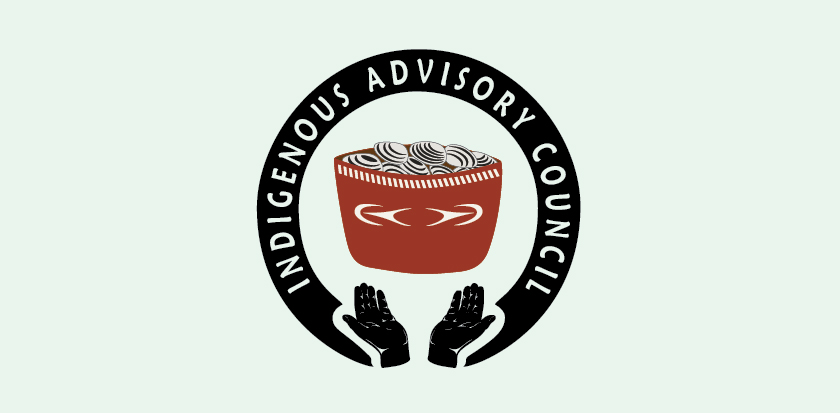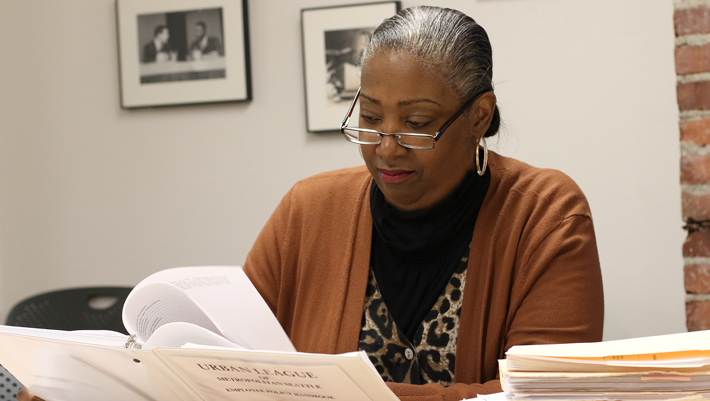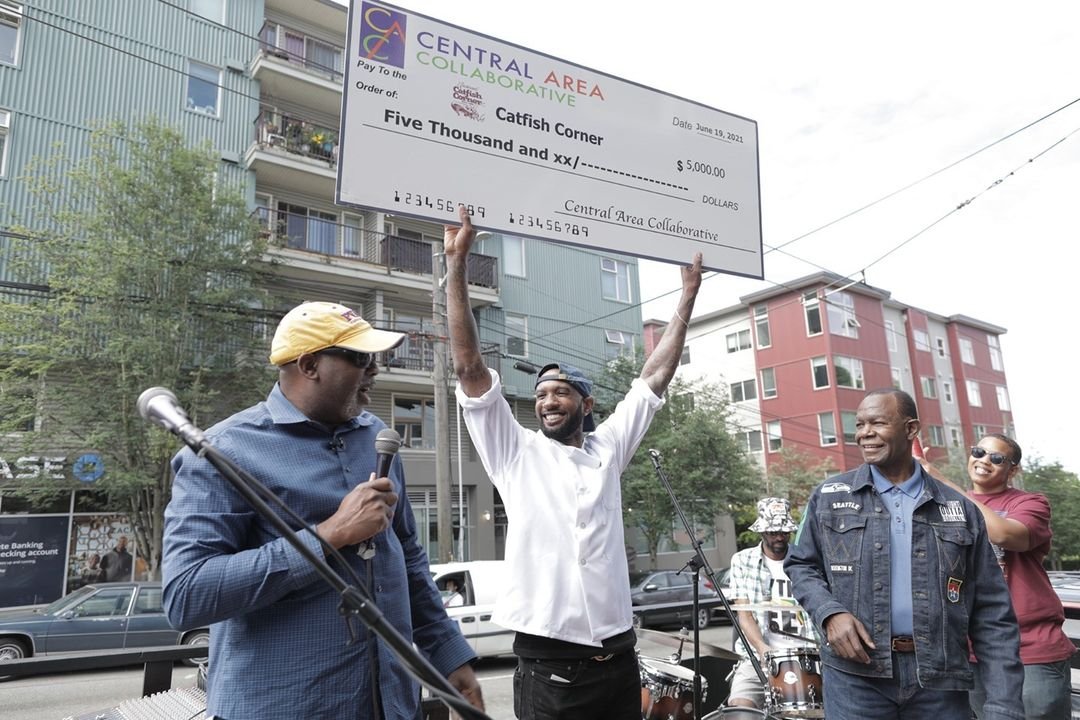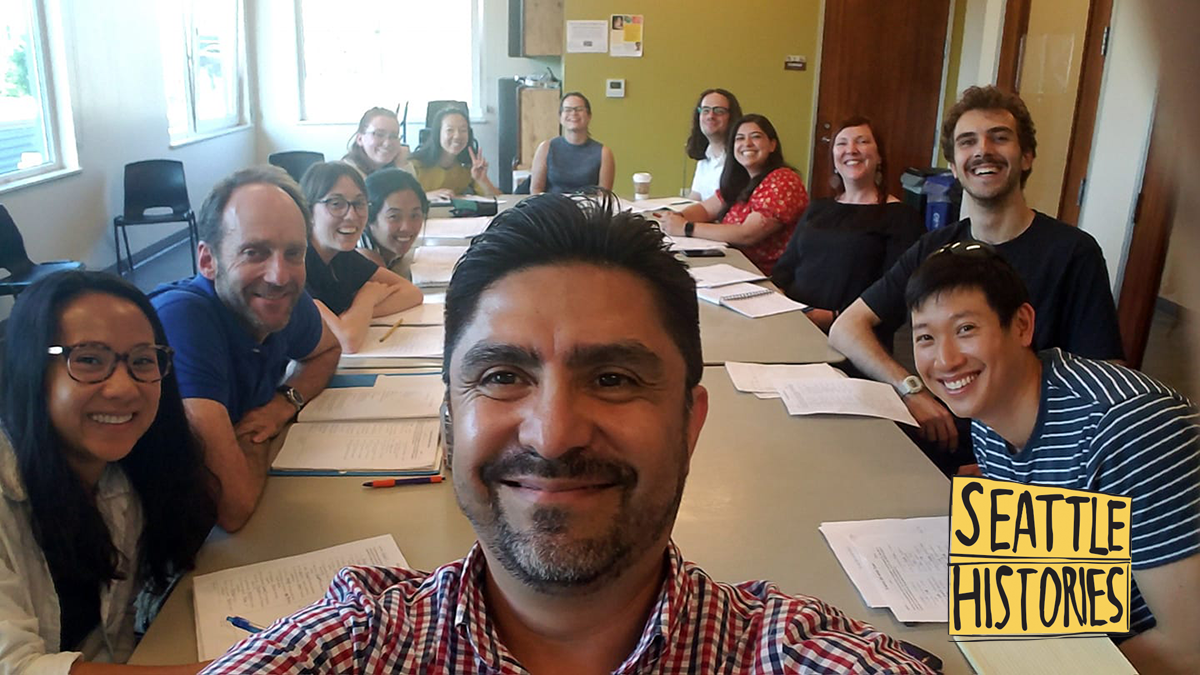
Historic preservation in Seattle begins with community. The Seattle Histories storytelling project highlights the places, people, and events that have shaped the history of Seattle’s communities. These stories, told by community members, emphasize experiences and narratives that may have been overlooked or misrepresented in our city.
Somos Vecinos y El Maestro de Español
by Paco Díaz
Siempre he visto a un maestro como una persona comprometida, con preparación y vocación, ya que tienen una gran responsabilidad. También con la gran oportunidad para construir puentes entre las personas con las que interactúa, conocer y compartir muchas historias con la comunidad.
Yo trabajaba en una organización sin fines de lucro que opera un centro de trabajadores jornaleros en Seattle, comencé a trabajar como chofer, el centro estaba en un lote baldío en las calles de Western Ave and Battery St.
Todas las mañanas llegaban muchas personas a buscar trabajo, pero desgraciadamente se llegaban a confundir con personas que estaban en la esquina de Western Ave y Bell St. que hacian cosas ilegales, eso daba mala impresión para el Centro de Trabajadores.
Afortunadamente, en el 2008 se logró comprar un edificio para tener una nueva ubicación, específicamente en Central District, 17th Ave & Jackson St. Todo era felicidad en la organización, pero había un detalle, los vecinos que vivían en la zona no querían que la organización se mudara ahí, pensaban que traerían a las personas que hacen cosas fuera de la ley.
Entonces, en la organización se hicieron esfuerzos para explicarles y garantizar que no habría ningún problema, ya que las personas que acudirán a la organización eran trabajadores y estudiantes de inglés. Era necesario crear un vínculo con esa comunidad y alguien tuvo la idea de ofrecer clases de español.
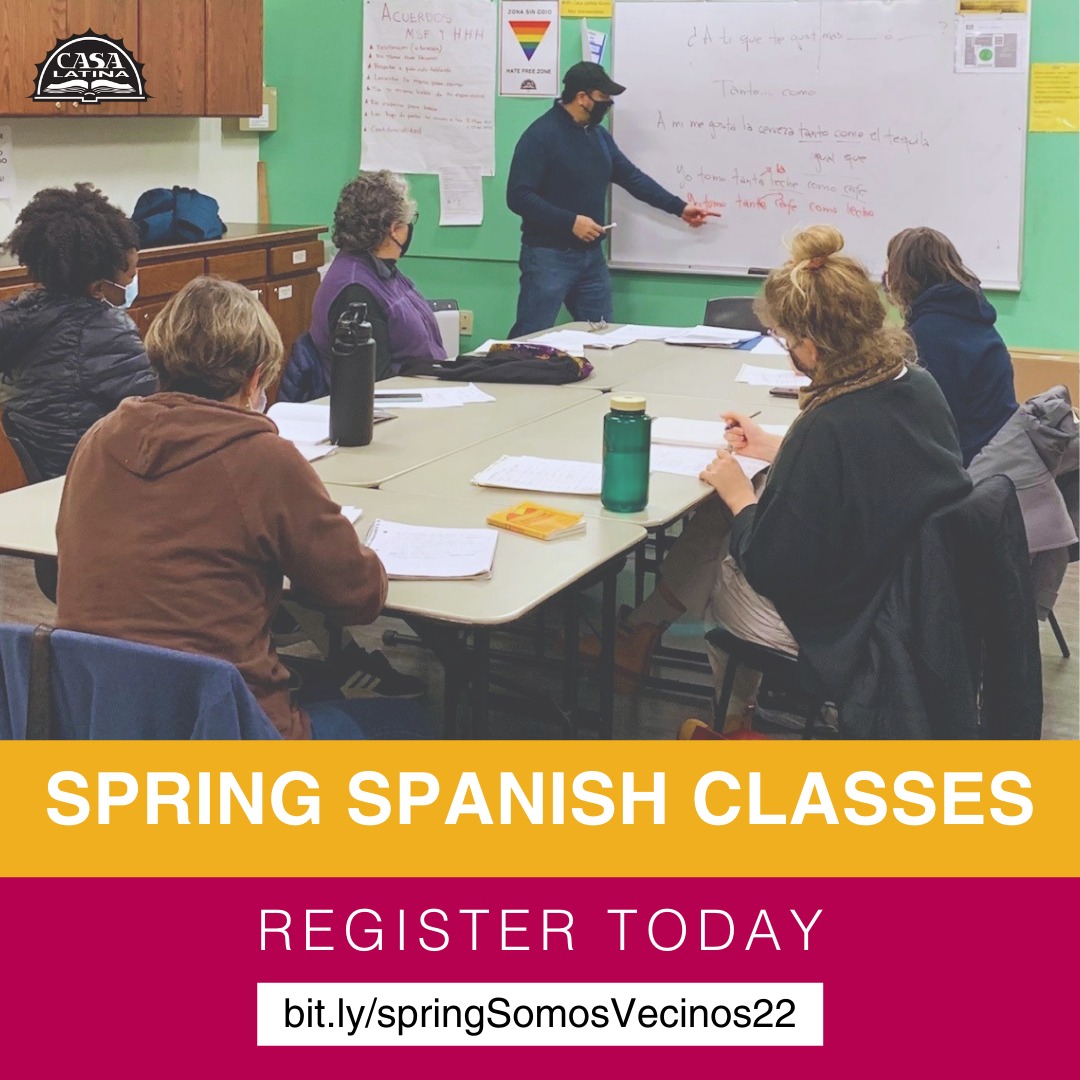
Una de las soluciones era crear un programa donde se ofrecieron clases de inglés para trabajadores por la tarde, y al mismo tiempo clases de español para los vecinos que quisieran aprender y practicar otro idioma, además se tenía la oportunidad de convivir entre todos los alumnos ambos idiomas al final de la clase con actividades divertidas. El nombre de este programa es SOMOS VECINOS.
Yo comencé en aquel momento como un maestro voluntario de español, cumpliendo un sueño, además fue una forma para mí de aprender y practicar inglés, con la oportunidad de conocer a mi comunidad, ya que yo también vivía en Central District.
Ahora en 2022 el programa continúa vigente después de 14 años y yo sigo como Maestro de Español, comprometido y disfrutando construir puentes, porque al final, todos SOMOS VECINOS.
We are Neighbors and the Spanish Teacher
by Paco Díaz
I have always viewed a teacher as being engaged, following their calling with preparation and professionalism, since they have a great responsibility. They also have the great opportunity to build bridges between the people they interact with and to share many stories with the community.
I worked at a non-profit organization that operates a day labor center in Seattle. I started working as a driver. The center was in a vacant lot on Western Avenue and Battery Street.
Every morning, many people came to the center looking for work. Unfortunately, they were confused with people on the corner of Western Avenue and Bell Street doing illegal things which gave the Workers’ Center a bad reputation.
Fortunately, in 2008 the organization purchased a building at a new location in the Central District at 17th Avenue and Jackson Street. Everything seemed good within the Workers’ Center, but there was one problem. The neighbors who lived in the area did not want the organization there because they thought it would bring in people who did things outside the law.
So, the organization made an effort to explain the situation and guarantee that there would be no problems. Since the people who will come to the organization were workers and students of English, it was necessary to create a link with that community, and someone had the idea of offering Spanish classes.
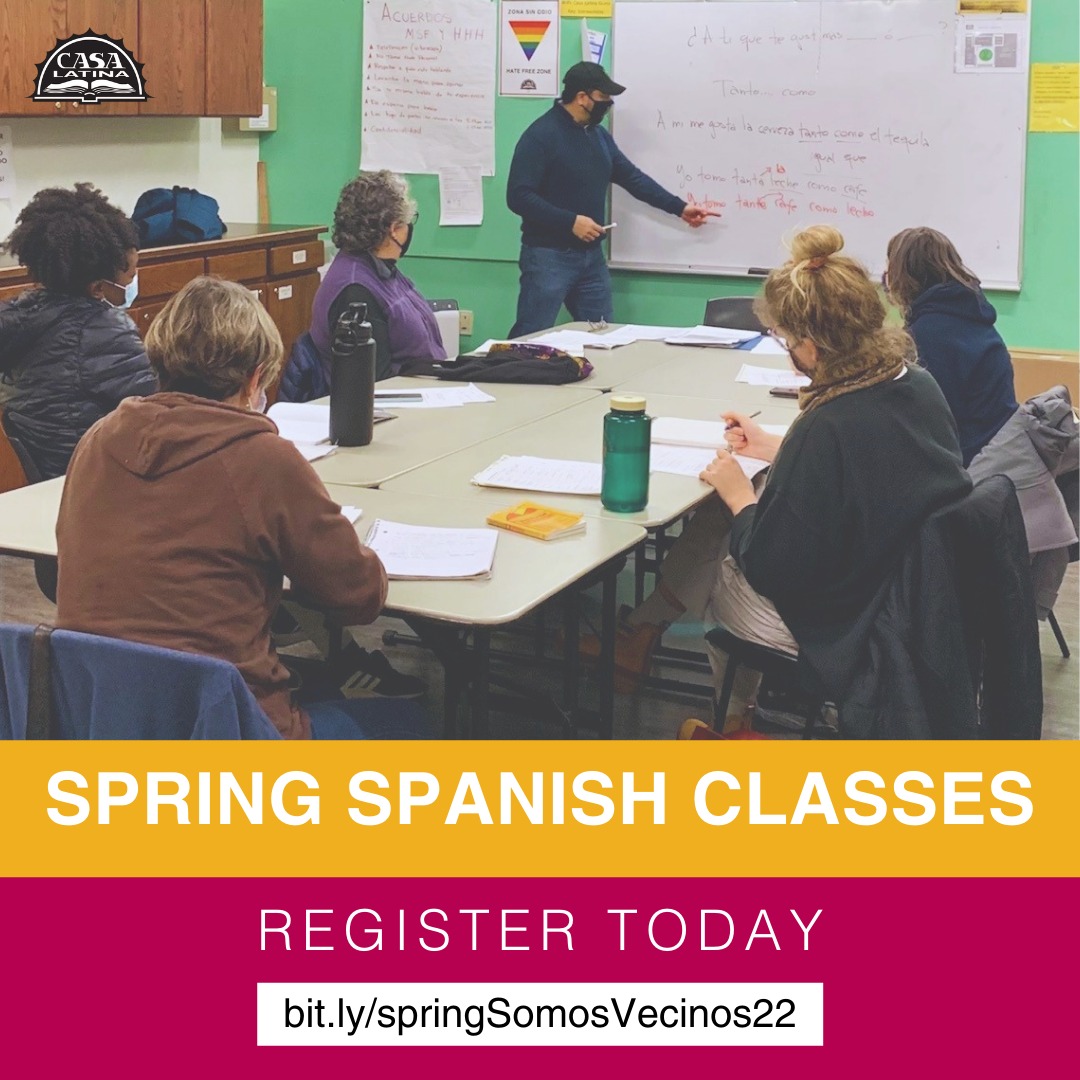
One of the solutions was to create a program where English classes were offered for workers in the afternoon while Spanish classes were available for the neighbors who wanted to learn and practice another language. This also provided an opportunity for the residents to coexist among all the workers. Students of both languages ended the class with fun activities. The name of this program is SOMOS VECINOS (WE ARE NEIGHBORS).
I started around that time as a volunteer Spanish teacher, fulfilling a dream for me. It was also a way for me to learn and practice English, with the opportunity to meet my community, since I lived in the Central District.
Now, in 2022, after 14 years the program continues, and I continue as a Spanish Teacher, committed and enjoying building bridges because, in the end, we are all NEIGHBORS.

